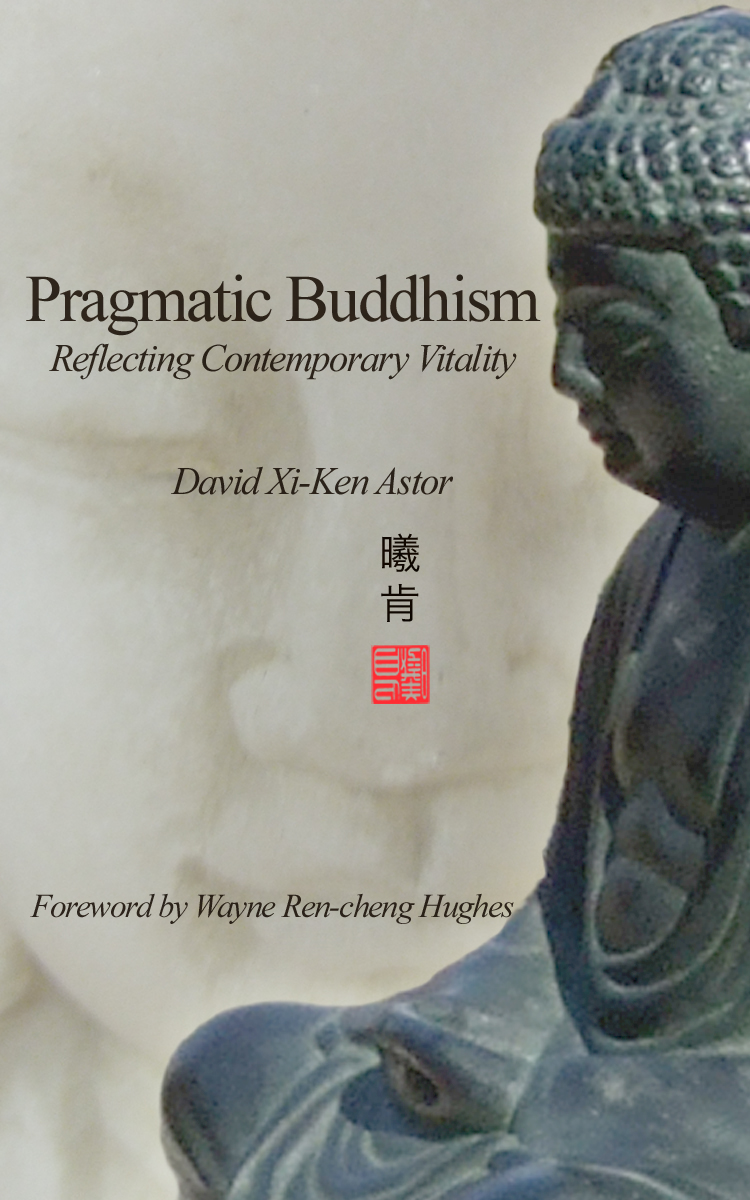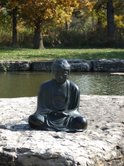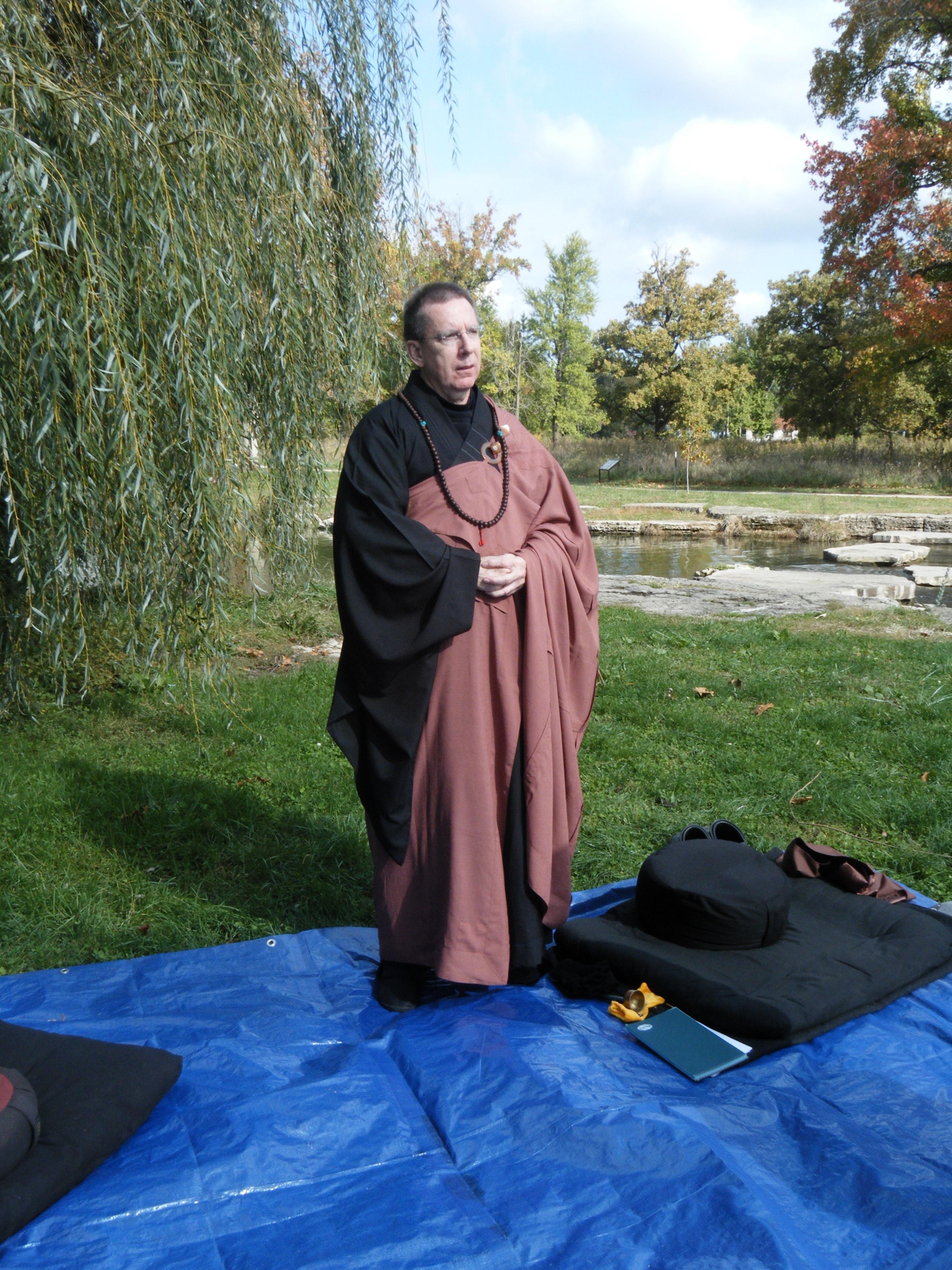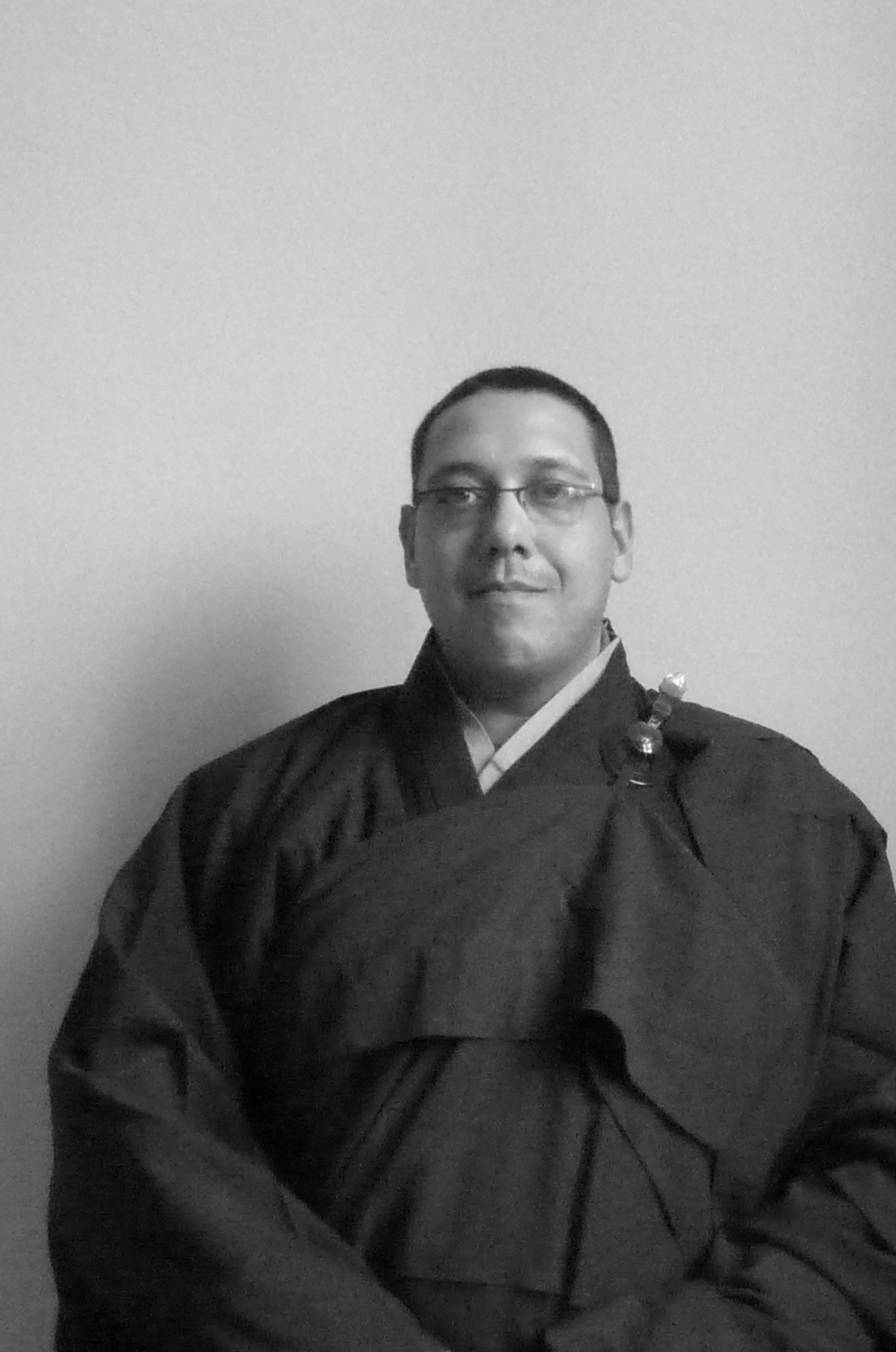By: David Xi-Ken Astor, Sensei
In all Buddhist traditions taking refuge in the Three Jewels (Buddha, Dharma, Sangha) is the first step in becoming a Buddhist. But what does “taking refuge” really mean? The Webster’s University Dictionary defines ‘refuge’ to mean: something to which one may turn for help, relief, or escape. OK, I can understand this when I consider the Dharma, and even the Sangha, but how am I to consider taking refuge in someone that is dead? After all, the Buddha was Siddhartha Gotama, a man that lived, taught, awakened to Universal reality, and flourished 2500 years ago. Just what am I taking refuge in? Is the Buddha still alive somehow?
The challenge for any Buddhist teacher when presenting Buddhism to new students is to avoid unconsciously creating an insurmountable barrier between the Buddha as reflected in Siddhartha’s legacy teachings that point to the dharma, and an abstract metaphysical persona of an idealized Buddha as reflected in the iconography created from the mind of man. When we look at the various Buddhist traditional schools practices today, it sometimes is hard to see the man that lived in India with a large following of both lay and monastic disciples, growing up a Hindu with a life of privilege with a young wife and child, giving practical lesson on how to live a life full of meaning and wonder for the world around them, begging for food and shelter as he did, that died after a long life in his 80’s leaving behind a foundational philosophy and worldview that is as relevant today as it was 25 centuries ago. In his place we often find in legacy as well as contemporary language a semi-divine being who is visualized as bearing numerous extraordinary physical characteristics, and whose life is described in fantastic mythical imagery. The essentially human element of the Buddha is dissolved in an impressive, but humanely unobtainable, idealized state of being. Considering this abstract image, the man slowly fades away and dies. And something altogether different emerges.
Most people who study Buddhism are familiar with the awakened teachings of Siddhartha; the teachings of the Four Noble Truths, the doctrine of not-self, the principles of interdependence and Dependent Origination for example. Fewer people are also aware that Siddhartha spoke often and with a compelling argument on a wide range of social and economic issues of his day that impacted governments, politics, and the difficulties involved in seeking social justice, as well as on personal relationships. That his teachings extends so dynamically into “right action” indicates that the Buddha’s wisdom can be appreciated not just in monasteries but also on the streets and in our homes in the 21st century. As we navigate the moral and ethical dilemmas of modern life, the Buddha’s teaching can provide a way to see our way home. Stepping onto the Buddhist path can transform that navigation into something wondrous. For you see, we are given a change to see the life of the Buddha, as our own.
I would like to think that the purpose of the scholarly research, intense efforts of translating the Buddhist canon into contemporary language, hours upon hours of cushion-time, and deep contemplation and personal practice in Buddhist thought is to clarify the nature of the person we call the Buddha, the significance of his experience, and the meaning of his awakened deep insight of Universal nature, in order for us to also be awakened to our own potential for personal and social flourishing. However, these attempts at clarification are constantly subjected to a strong counter-tendency to project ideas away from the mans philosophical and spiritual enlightened teaching, and more toward institutionalized practices to idealize a traditions interpretation of historical events and establishing an authoritative voice that may not recognize the importance of a pluralistic worldview. We can find this tendency in all traditions at times, including my own. Sometimes I wonder if the goal of the worldwide Buddhist community becomes more that of one defending and upholding a particular set of beliefs and practices, and less that of discovering the meaning and purpose of our own potential for awakened moments, when we really focus on how we are. In this type of atmosphere the Buddha recedes further away from being a man and becomes a shining object of worship, standing for all that is good and noble, while the man sinks deeper into the muck of remembrance.
So I ask the question again, “ Is the Buddha still alive?” As students of Buddhism, what does taking refuge in the Buddha mean. Did Siddhartha give us an answer? In fact, he did. We find it in the Samyutta Nikaya (The Connected Discourses), chapter III, #47, Establishments of Mindfulness, verse 9. In this sutra we find Venerable Ananda, his personal attendant and longtime disciple, very worried over the health of the Buddha who is 80 years old and very sick. It was in the rainy season and while ill with terrible pains bordering on death the Buddha endured and remained mindful and clearly comprehending what was happening around him and was not stressed out. The Buddha finally recovered and came out of his dwelling and sat down in some shade. Venerable Ananda came to him and expressed joy over his feeling better, and expressed some trouble he had during this sick period because he could not come to the Buddha with questions as some teachings were not yet clear to him and he needed the Buddha’s help. Venerable Ananda felt some consolation, however, that the Buddha would not pass away without a pronouncement concerning who the monks could go to after the Buddha died. Ananda was looking for a refuge and teacher after the Buddha was no longer with them. I now pick up the story with the Buddha’s response to Ananda’s dilemma.
“What do the monks now expect from me, Ananda? I have taught the Dhamma, Ananda, without making a distinction between inside and outside. The Buddha has no closed fist of a teacher in regard to the teachings. (this means no secretes he alone knows) If, Ananda, anyone thinks, ‘I will take charge of the monks, or the monks are under my direction, it is he who should make some pronouncement concerning the monks. But, Ananda, it does not occur to me, ‘I will take charge of the monks, or the monks are under my direction, so why should the Buddha make some pronouncement concerning the monks?’ Now I am old, Ananda, aged burdened with years, advanced in life, coming to the last stage. My age is now turning eighty. Just as a old cart keeps going by a combination of straps, so it seems the body of the Buddha keeps going by a combination of straps.
Whenever, Ananda, by non-attention to all signs and by the cessation of certain feelings, the Buddha enters and dwells in the signless concentration of mind, on that occasion, Ananda, the body of the Buddha is more comfortable. Therefore, Ananda, dwell with yourselves as your own island, with yourselves as your own refuge, with no other refuge; dwell with the Dhamma as your island, with the Dhamma as your refuge, with no other refuge. And how, Ananda, does a monk dwell with himself as his own island, with himself as his own refuge, with no other refuge; with the Dhamma as his island, with the Dhamma as his refuge, with no other refuge? Here, Ananda, a monk dwells contemplating the body in the body, ardent, clearly comprehending, mindful, having removed covetousness and displeasure in regard to the world. He dwells contemplating feelings in feelings … mind in mind … phenomena in phenomena, ardent, clearly comprehending, mindful, having removed covetousness and displeasure in regard to the world.
Those monks, Ananda, either now or after I am gone, who dwell with themselves as their own island, with themselves as their own refuge, with no other refuge; with the Dhamma as their island, with the Dhamma as their refuge, with no other refuge, it is these monks, Ananda, who will be for me topmost of those keen on the training.”
Well, there you have it. Direct from the Buddhist cannon. How then is this tendency towards projecting the central concern of Siddhartha’s status after death in an unobtainable ideal to be prevented? It is essential to the continuity of Buddhist principles that we redefine them in a language and manner of thinking that is compatible with the social, cultural conditions, and modern scientific understanding of our generation. The real root cause of this dilemma, as I see it, is found in our craving to find a permanent security in something distinct from and unrelated to ourselves. Our initial interest in Buddhism may have been motivated by the discovery that no lasting security can be found in the external phenomena of the world we experience. But the danger now is that we change direction and turn toward an internal conscience made up from our imagination of immaterial entities. We become fascinated by a complex belief structure, that associates a perfection and supernatural quality of a theorized Buddha, and the promise of salvation in an afterlife. Is this the refuge some of us are seeking perhaps?
The key I think is to work to prevent this tendency towards idealization of a belief system from alienating us from the individual and social implications that the Buddha articulated in the Four Noble Truths. It is important to never allow the elements of a belief system to become fixed and unchanging, thereby assuming an inherent value in themselves. The belief system is not the Dharma, it is a tool, a bridge we use to get to the other shore. In order for the conceptual and symbolic nature of Buddhism to enable us to actualize our own potential it is necessary that the structure remain transparent. This means that we need to always look through it towards the possibilities of existence that it refers to, and not at it. In this way Buddhism acts as a filter through which we experience and interpret our world. When we come to understand this, Buddhism becomes subordinate to the human experience and the body-mind that it awakens. The concepts, dogmas, and symbols of Buddhism have meaning only in relation to our human expression interdependent with all other Universal expressions. All the practices of Buddhism are simply ways of actualizing the potentialities of our existence, if we quiet the mind and sit in awareness. Buddha (Enlightened One) is an example of the optimum potential of our own possibilities in this very moment. It is only through remaining firmly within this human context that a meaningful un-alienated perspective can be gained with regard to the Buddha’s teachings we seek to take refuge in. Siddhartha’s original teaching stressed that the aim of a spiritual life is achieved through constant mindfulness of the psycho-physical elements of man, and not through speculative inquiry concerned with either a divine absolute or a permanent self. It avoids any expression of blind faith.
Stephen Batchelor when considering how Buddhism can play a meaningful role in the life of man today, makes the following statement, “The survival of Buddhism depends upon the experiential rediscovery of its innermost spark, and the articulation of that experience in a language that speaks directly to the deepest hopes and fears of present-day man.” This requires putting emphasis on the essential humanity of Siddhartha and the focus on the humanity imbedded in his teachings that shows the path of liberation from the type of suffering that comes from self-generated cravings and entanglements. When we come to honor the teachings of the Buddha as they are reflected in both the legacy canon, as well as contemporary lessons as reflected by our modern masters, we awaken to our own possibilities for a life of harmony and contentment that we can also share with others, as it is being handed down to us by our Buddhist ancestors. This process of discovery needs to be solidly grounded in the living continuity of the Buddhist principles. We learn to appreciate all life, and waking up to the spirit and wonder of our human condition. It is in this dimension of reality that we go for refuge in the name of the Buddha. It is about trust and unwavering commitment. We come to appreciate that our practice is not only about our own awakening to what the Buddha was pointing to, about relieving our own unsatisfactoriness, but it is also about relieving the suffering of all beings.
Finally, it is important for us to appreciate the unity and the oneness of the Buddha, the Dharma, and the Sangha. For you see, the Buddha, the Dharma, and the Sangha completely merge and are one reality. Taking refuge is not a matter of casual action. It requires a complete body-mind commitment, awareness of our intent in taking refuge, and personal good will that is reflected in the positive karma that results. Only we have the power to take advantage of the karmic-chain that has placed us in this time and place. It is a unique opportunity, and how we use it is totally in our hands. This is the meaning of the existential phrase “existence before essence”. No one can do it for us, even thinking about taking refuge in the Buddha can not do it for us, it is not up to Siddhartha, he only acts as a reminder of what is possible as his wooden image sits on our alter. It is totally up to us. What refuge are you seeking? What brings you here?


















































































